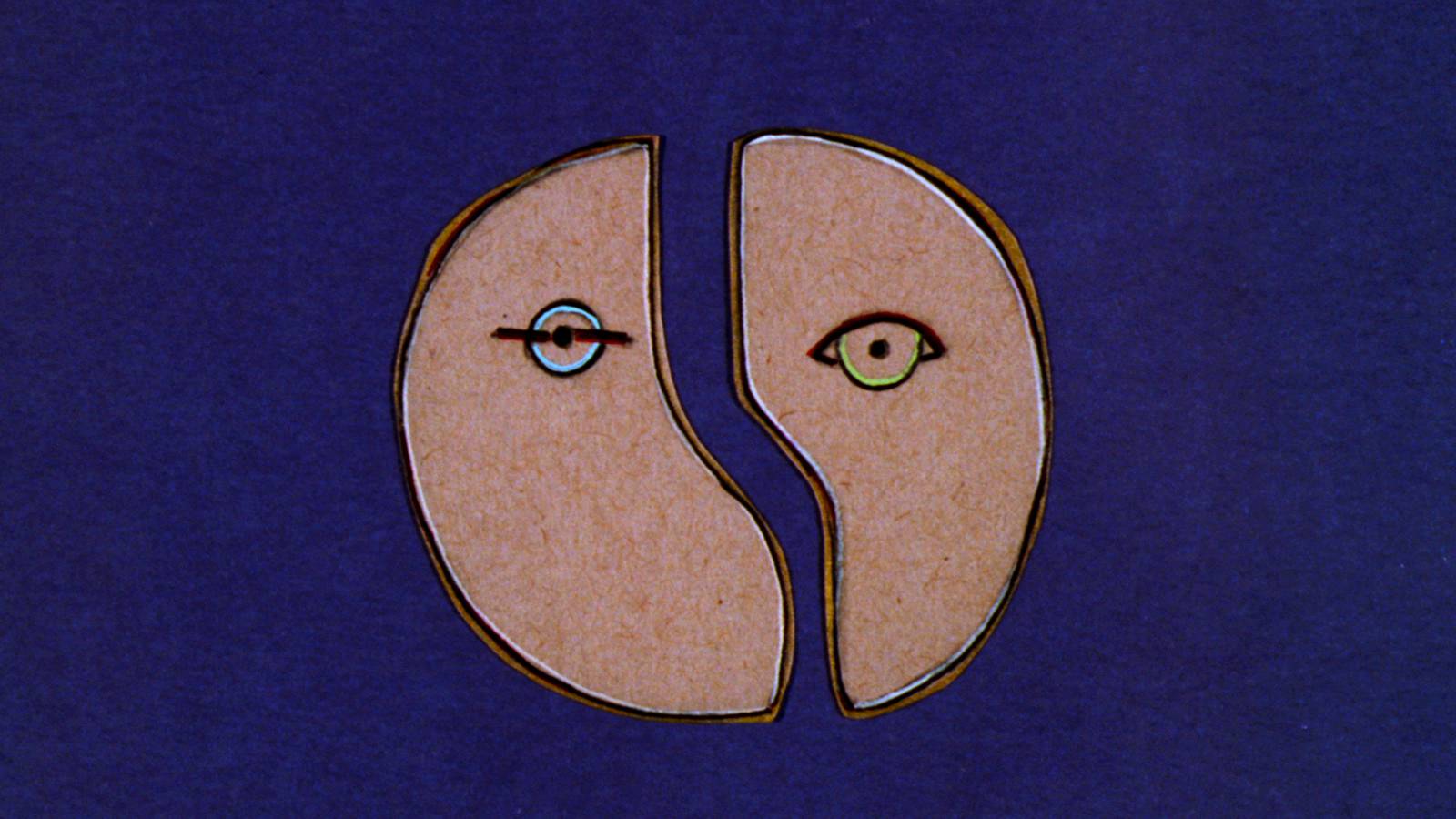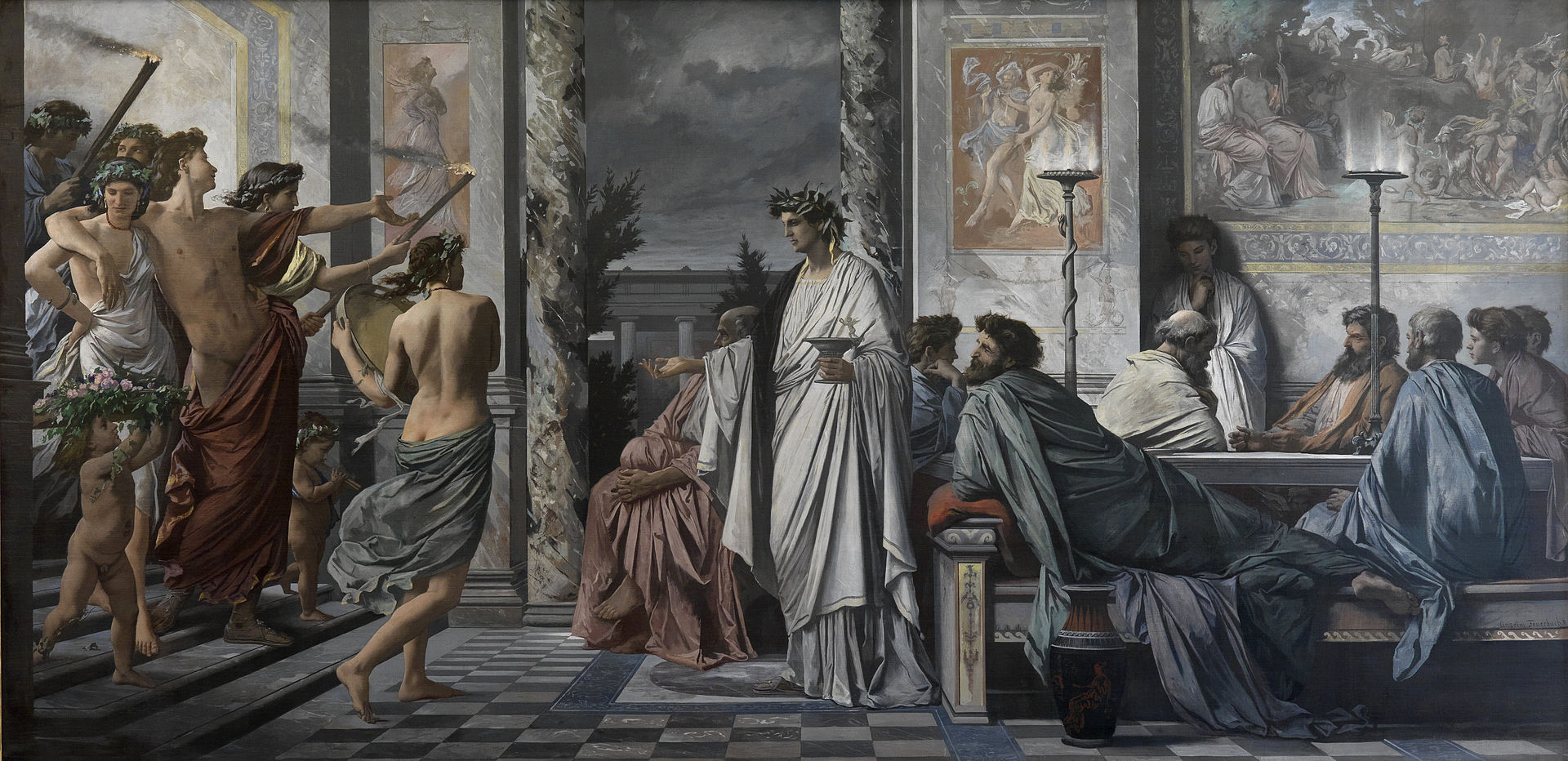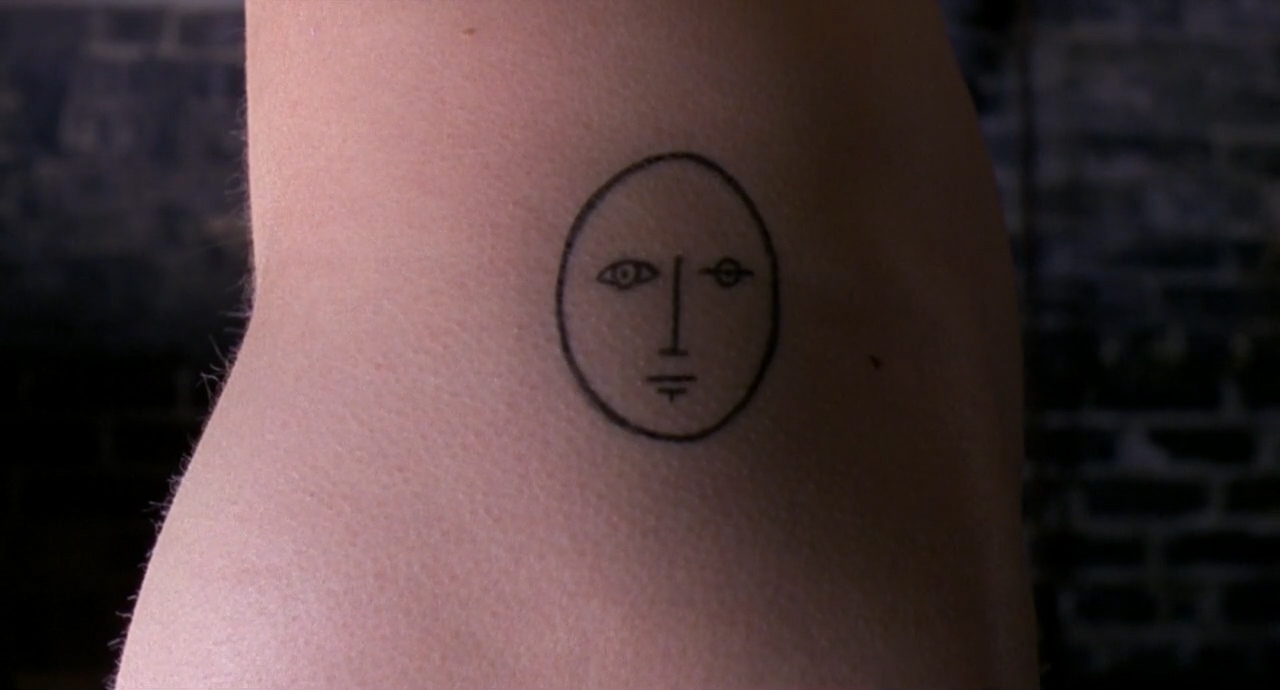Table of Contents Show
Hedwig and the Angry Inch (( Mitchell, John Cameron. Hedwig and the Angry Inch. 20 July 2001. Killer Films. Film. )) uses more of Plato’s philosophy than people may think. The movie tells the story of Hedwig, born Hansel, a genderqueer rock star from East Germany. Desperate to escape East Germany, she marries an American sergeant who requires that she get a sex change operation before coming to America. Unfortunately, the sex change was unsuccessful, leaving Hedwig with “a one-inch mound of flesh” that she calls her “angry inch” (( Trask, Stephen. “Angry Inch.” Hedwig and the Angry Inch: Original Motion Picture Soundtrack. Hybrid, 2001. CD. )).
After her husband leaves her, Hedwig falls in love with a younger man named Tommy. Hedwig gives him his stage name “Tommy Gnosis” and acts as his music mentor until he abandons her one day, stealing her music and leaving her with nothing as he becomes a famous rock star. During Hedwig and the Angry Inch, details of Hedwig’s past are revealed through song as Hedwig and her band (Hedwig and the Angry Inch) follow Tommy Gnosis on his tour across America.
Plato’s Symposium And Hedwig
Hedwig’s motivations can be understood by looking at Plato’s Symposium. The core of Hedwig’s character is composed of the ideas presented in her song “The Origin of Love,” which is based on Aristophanes’ speech in Plato’s Symposium. Aristophanes’ speech tells the story of humans who used to be physically attached to their lovers—these pairs included men with men, women with women, and men with women.
One day, these humans tried to overthrow the gods, so as punishment, Zeus cut them in half and scattered them across the world. Now, these humans, who had once been attached to their soulmates, spend their lives in search of the one they lost, creating a feeling of incompleteness until they are reunited with their “other half” (( Plato. Symposium. Ontario, Canada: Divert Thrift Editions, 1993. )). Throughout her life, Hedwig has felt incomplete, and despite the changes she’s made to herself, she still faces constant rejection and betrayal. And yet, Hedwig still clings to the idea of the soulmate presented in Aristophanes’ speech because it promises that there is someone out there who will make her feel whole again—if only she can find them.
The Origin Of Love In Hedwig And The Angry Inch
Hedwig and the Angry Inch’s song “The Origin of Love” lies at the heart of the movie. Aristophanes’ story about the origin of love is poetic and beautiful, and it promises that everyone has a soulmate. In his speech, Aristophanes uses precise language that resonates with Hedwig. For example, Aristophanes argues that humans are lost without their other half. He posits that “we were [once] whole” and that love is “the pursuit of the whole” we have lost (( Plato. Symposium. Ontario, Canada: Divert Thrift Editions, 1993. )). He continues by stating that humanity can only be happy if we return to our “original nature” by reconnecting with the person who was once our literal other half (( Plato. Symposium. Ontario, Canada: Divert Thrift Editions, 1993. )).
In Plato’s Symposium, Aristophane’s understanding of love argues that love is every human’s true pursuit. With his story, Aristophanes entwines the concepts of love and fate by arguing that every person has one destined true love who they need to find; otherwise, they’ll spend their lives feeling incomplete. Therefore, by his logic, humans cannot feel complete on our own.
All Hedwig wants is to feel whole and happy. She even has a tattoo inspired by the philosophy in “The Origin of Love” that is based on the drawings seen during the performance of the song. The tattoo shows two separated halves of the same face, which represents both the separation of the soulmates Aristophanes talks about and Hedwig’s feeling of incompleteness.

Throughout Hedwig and the Angry Inch, Hedwig’s goal is to find the love and acceptance that she has been denied time and time again. Aristophanes’ idea about soulmates provides Hedwig with a kind of “solution” to her loneliness because if everyone has a soulmate, then everyone is guaranteed love.
However, it is very important to mention that Hedwig is not incomplete, she just feels like she is because of how other people treat her. It is her perception of the world, and her attachment to Aristophane’s understanding of love that makes her feel less than she really is.
Hedwig’s Search For Her Other Half
The most important part of “The Origin of Love” needed for understanding Hedwig’s character is not her retelling of Aristophanes’ story, but her interpretation of it. At the end of the song, Hedwig addresses an unnamed “you” who is her metaphorical soulmate. Upon recognizing this “you” as her soulmate, Hedwig sings, “The pain down in your soul was the same as the one down in mine” (( Trask, Stephen. “The Origin of Love.” Hedwig and the Angry Inch: Original Motion Picture Soundtrack. Hybrid, 2001. CD. )).
Here, Hedwig is able to identify her metaphorical soulmate because she sees her pain reflected back in their eyes. Based on this quote, if Hedwig were to describe her life in one word, at this point in Hedwig and the Angry Inch, she would describe it as painful. After all, it seems like no matter how many physical and emotional sacrifices she makes, it’s never enough for people like her ex-husband or Tommy Gnosis. Perhaps she thinks that if someone can truly understand the depth of her pain, then maybe they won’t leave her, too—maybe they can make her feel whole.

Halfway through Hedwig and the Angry Inch, viewers get to see Hedwig and Tommy Gnosis’ separation. Hedwig’s desperation to find her other half is clearly seen in moments like these when people reject her or try to leave her. Amid a beautiful kissing frenzy, Hedwig places Tommy’s hand inside her pants. When Tommy feels her “angry inch,” he pulls away from Hedwig. When he asks her about it, she tells him, “It’s what I have to work with” (( Mitchell, John Cameron. Hedwig and the Angry Inch. 20 July 2001. Killer Films. Film.)). Hedwig believes that her “angry inch” is a hindrance to her relationships and that it’s something she has to justify to other people. So when Tommy freaks out about it and tries to leave, Hedwig lashes out and is left devastated and alone in her trailer.
Hedwig wants to reconnect with Tommy Gnosis, which propels her to follow him on tour. But at the very end of Hedwig and the Angry Inch, Hedwig realizes that she doesn’t need Tommy, or anyone else for that matter, to feel complete. In order to understand Hedwig’s reconciliation with herself that takes place at the end of the movie, you need to better understand Plato’s stance on eros.
Plato’s Interpretation Of Greek Eros
Love was an important concept for the ancient Greeks, and Plato’s Symposium features different philosophers’ arguments about love. There were four main forms of love in ancient Greek philosophy: storge (“affection”), philia (“friendship”), agape (“charity”), and eros (“romantic”) (( “Four Types of Love,” The Official Website of C.S. Lewis, CS Lewis (accessed July 12, 2020). )). In Hedwig’s case, she is most interested in eros—the romantic, passionate love.
In Plato’s Symposium, Plato presents a variety of philosophers’ explanations for eros. For Hedwig, the two most important philosophers from Symposium are Aristophanes and Socrates (Plato’s mouthpiece). For Plato, eros in its best form is spiritual, which we now call “platonic love.” In Plato’s mind, platonic love looks past someone’s physical body and even their soul in order to reach the divine and understand the Truth (( Wikipedia contributors, “Platonic love,” Wikipedia (accessed July 12, 2020). )). After all, Plato says that the god of love, Eros, was a demigod, so Eros and the love he represents act as humanity’s bridge to divine knowledge and understanding (( Wikipedia contributors, “Eros (concept),” Wikipedia (accessed July 12, 2020). )).

Hedwig’s Embodiment Of Gnosis
At the end of Hedwig and the Angry Inch, Hedwig has a “vision” where Tommy sings “Wicked Little Town (Reprise).” In this song, Tommy apologizes to Hedwig and recognizes her pain and the part he played in exacerbating it.
For example, he sings, “Cos with all the changes you’ve been through, it seems the stranger’s always you” (( Trask, Stephen. “Wicked Little Town (Reprise).” Hedwig and the Angry Inch: Original Motion Picture Soundtrack. Hybrid, 2001. CD. )). From the physical and emotional trauma she’s endured, and her attempts to fit a mold to find her soulmate, Tommy Gnosis tells her that he sees how Hedwig has become a stranger to herself in the pursuit of her other half.
In this scene, Tommy Gnosis acts as a physical symbol of his Greek namesake by serving as Hedwig’s “Gnosis.” Gnosis is a Greek term that means “knowledge from experience” (( “What is Gnosis?,” Gnostic Teachings, gnosticteachings (accessed July 12, 2020). )). In other words, Gnosis exists only as a concept because it’s impossible to quantify personal experience. Hedwig still seeks the “wholeness” that Aristophanes’ philosophy on love promised, and she appreciates Plato’s connection of love and knowledge, but she trades in the philosophies presented in Plato’s Symposium and recognizes her own Gnosis.
Hedwig’s Own Truth
The true significance of Plato’s Symposium on Hedwig and the Angry Inch is not its presence, but Hedwig’s eventual rejection of both Aristophanes’ and Plato’s philosophy in favor of her own philosophy—her own Truth. As Tommy sings in this song, “And there’s no mystical design. No cosmic lover preassigned” (( Trask, Stephen. “Wicked Little Town (Reprise).” Hedwig and the Angry Inch: Original Motion Picture Soundtrack. Hybrid, 2001. CD. )).
Hedwig’s life is hers to explore and to experience without needing to feel external pressure from the divine. Her philosophy does not say that life, love, and the Self are dependent on fate, but instead on oneself. There is no mold designed by fate for Hedwig to fill; there is no expectation for her to live up to. Her realization is so profound that it is physically represented in her tattoo of two halves of the same face becoming one complete face, even without the presence of a soulmate.

Hedwig letting go of this idea of soulmates by the end of the movie is what allows her to feel the completeness/wholeness that finding her “soulmate” was supposed to provide. For most of Hedwig and the Angry Inch, Hedwig is constantly fighting herself in order to try and fit a mold to appease fate. Despite the harm caused by Aristophanes’ idea of love, his ideas are still important for Hedwig because they show her what she doesn’t want: a dependence on other people’s approval.
At the end of the movie, Hedwig accepts that Aristophanes’ idea of soulmates isn’t for her. She realizes that she doesn’t owe anyone an explanation. She doesn’t have to justify her body, gender, or sexuality to anyone. Hedwig is allowed to just be Hedwig.
